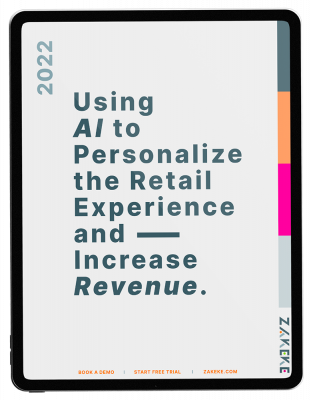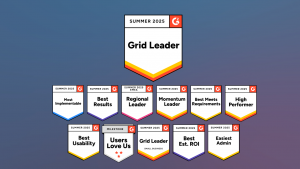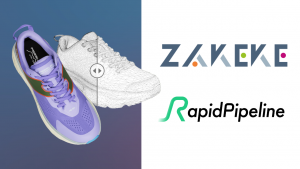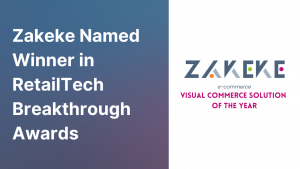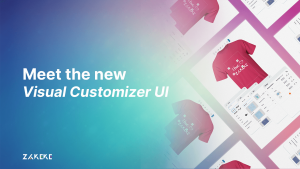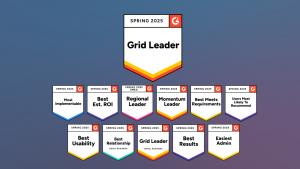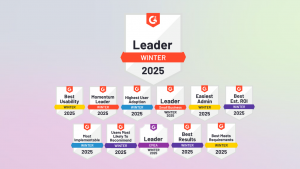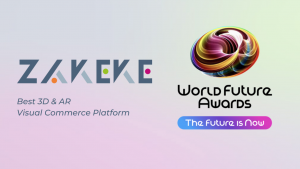The digital world is a competitive arena for businesses. To succeed, you need to find ways that will allow you to stand out against the competition and get prospective customers to notice your brand.
There are many ways to achieve this. You can use various digital marketing strategies to reach out to your target audience and get them interested in what you have to offer.
Some of the strategies you can try are search engine optimization (SEO), social media marketing, email marketing, and pay-per-click (PPC). But one of the best ways to catch the attention of your prospective customers is through visual content marketing.
What is Visual Content?
Visual content is a form of online content that uses images, videos, or infographics to convey valuable information in an engaging format. It is one of the most effective methods to increase customer engagement because it is highly shareable and can be easily understood by anyone who sees it.
How Visual Content Affects Your Audience’s Engagement
There are many ways in which visual content and customer engagement are related. Here are some of the most important ways visual content influences the latter:
- Grab Attention
In a world where users are bombarded with information, it’s important to make sure that your target audience isn’t overwhelmed with text-based data. Although using text is the most effective way of providing your audience with valuable information, you need to attract users to read your content. The best way to do this is to use appealing visuals.
Adding visual content to your web pages will make them look less boring. Filling your web pages with blocks of text can overwhelm some users and even cause them to leave your site. By breaking up big blocks of texts with visual content, you can grab the attention of your target audience and entice them to stay on your page longer.
Visual content also provides you with more room for uniqueness and creativity. This then makes your web pages more eye-catching to users, ultimately influencing their decision to engage with your content.
- Avoid Stock Photos’ Negative Connotations
Stock photos are designed to be generic, which is why they might not be the best choice when trying to engage your target audience. The problem with stock photos is that they can come across as inauthentic and make your brand look like it’s trying too hard to be something it’s not.
Although it’s easier to search for stock photos online instead of creating your own visual content, it’s best to avoid using them or at least use them sparingly. You should instead invest in creating original visual content to set your brand apart from your competitors. Doing so will also make your target audience see your brand as more authentic and trustworthy.
- Ensure Consistency and Coherence
Creating visual content for your website can make it look more consistent and coherent for your target audience. This is because using visuals can help tie all the different elements on your page together, making it look more put-together.
It’s important to ensure that the visual elements you use are relevant to the context of your webpage. For example, using photos related to the text on your page can help create a more cohesive design. This will make users more comfortable scrolling through your web pages and engaging with your content.
To ensure consistency and coherence across your website, ensure that your visual content only uses at most three typefaces. It would also be beneficial to stick to a minimal color palette and use the same illustration style when creating visual content for your digital ads, web pages, and social media posts for business promotion. Doing so will give your website a more professional look and feel.
- Make Information Easy to Digest
One of the advantages of using visual content is that it can make complex information more digestible for your target audience. This is because visuals can help break down data and simplify it for users. Additionally, studies have shown that individuals can process information presented in visual content 60,000 times faster than text-based content.
Visual content also helps your target audience become more engaged with your brand because most users only read 20% of text-based content that exceeds 593 words. However, when this same content is delivered in visual form, users are more likely to read it. This means that if you want your target audience to fully engage with the content on your website, you need to use visuals to make the information more digestible.
- Drive Customers’ Emotions
Tap into your target audience’s emotions and encourage them to engage with your brand by creating visual content that resonates with their needs and preferences. To achieve this, you need to use the right color tools and create the right message that will help them understand your brand more deeply.
Some colors tend to evoke certain emotions in people. For example, the color blue is often associated with feelings of trust and reliability, while the color red is often associated with feelings of energy and excitement. You need to use these colors strategically in your visual content and customer engagement strategy to help drive the right emotions in your target audience and entice them to engage.
Creating great visual content can also help you encourage your prospective customers to take actions that will benefit your brand. When you partner this with a well-thought-out call to action, you can increase the likelihood of getting your target audience to do what you want them to. This may either be subscribing to your newsletter, following your brand on social media, or making a purchase.
- Keep Your Target Audience Hooked
After catching the attention of your target audience, you need to keep them interested in what you can offer and continue enticing them to engage with your brand. This is important to avoid losing your prospective customers to your competitors and having them forget about your business.
To keep your target audience hooked, you need to create visual content that’s not only relevant and helpful but also visually appealing. This means using high-quality photos, videos, and graphics that are pleasing to look at. Additionally, you need to make sure that your visual content is updated regularly so that users don’t get bored of seeing the same thing over and over again.
- Make Content Easy to Share
Visual content is easier to share than text-based content. Users don’t have to copy and paste a block of text when sharing photos, videos, and other forms of visual content on social media accounts.
Because of this, they will be more willing to share your visual content on their social media feeds. Additionally, when users share your visual content, it helps increase brand awareness and reach as their followers will also be exposed to your business.
This is why it’s important to make sure that your visual content is shareable. You can do this by adding social media sharing buttons on your website or blog and by using hashtags on your photos and videos.
- Provide a 360-Degree Product Experience
In today’s highly competitive market, you need to find ways to stand out from the rest. And one way to do this is by providing a 360-degree product experience.
A 360-degree product experience is when a business provides its target audience with a complete view of its product. This can be done by creating product photos and videos that show the product from all angles. Additionally, you can create virtual reality content to give users an immersive experience.
By providing a 360-degree product experience, you can give your prospective customers a better idea of what you’re selling. This can help increase the chances of urging users to engage with your website and making a sale as they would have a better understanding of the product.
- Establish Credibility
In order for customers to trust and engage with your brand, you need to establish credibility. One way to do this is by creating visual content that’s credible.
You can achieve this by creating visual content that showcases your expertise in your field. This can be done by creating infographics, blog post images, and even videos that can help establish your brand as a thought leader and an authority. Additionally, you need to make sure that your visual content is accurate and free of errors.
Types of Visual Content
There are different types of visual content that you can use to improve your digital customer engagement. Some of the most popular ones are the following:
Images
An image is the most common form of visual content and customer engagement tool. You can often find one accompanying an article or blog post. It is used to break up the text and make long series of paragraphs more visually appealing.
You can use different kinds of images to grab the attention of your target audience and make your message more memorable. There are lots of online repositories with stock images ready to be used. They can also be used to drive emotions and create a connection with your target audience, which is a great strategy for encouraging engagement.
Best Practices
- As much as possible, use original images for your website. Avoid using stock photos to engage customers better;
- Make your images pop by playing around with colors;
- Ensure that the images you use are relevant to the context of your webpage;
- Add keywords to your image titles and alt tags to optimize your images.
Infographics
Infographics are data-driven visuals. They present data in a visually appealing way that is easy to understand.
This type of visual content is a great way to break down complex information and make it more engaging for your target audience. They can also be used to portray your brand as a thought leader in your industry.
Best Practices
- Make the data represented in your infographics more comprehensible by using contrasting colors;
- Create a standalone infographic. Don’t make a visual that cannot be understood without the article or text it accompanies.
Videos
Videos are another popular form of visual content. They are often used by businesses to showcase their products or services in an engaging manner.
This type of visual content can be used to grab the attention of your target audience, build trust, and establish credibility. By showing a 360-degree view of your products and highlighting their unique features, customers will know that you have nothing to hide from them and will be more likely to be loyal to your brand. Additionally, videos are a great way to show off your brand personality.
Best Practices
- Use storytelling to make your videos more unique and engaging;
- Make sure that your videos are high-quality and informative;
- Add captions or transcripts to your videos for viewers who are unable to listen to the audio;
- Create a clear CTA for your videos to guide viewers on what they can do next.
Quotes
Although quotes are primarily considered textual content, they can be presented visually to make more impact. Quotes written as text may also be easily overlooked, so it’s best to make them more visual.
Adding quotes to your web pages can help establish your credibility, show off your brand’s personality, and make your content more shareable. Taking quotes from thought leaders in your industry can also help you position your brand as a credible source.
Best Practices
- Make sure that the quotes you use are relevant to the context of your webpage;
- Choose interesting and thought-provoking quotes;
- Add visual elements to your quotes to make them more appealing;
- Avoid making your design too cluttered to ensure that the reader can focus on the quote.
GIFs
GIFs have become increasingly popular in recent years as a way to add some levity and personality to web pages. They are often used in social media posts and comments.
GIFs can be used to add some fun and personality to your content. They can also be used to emphasize a point or reaction.
Best Practices
- Use relevant GIFs that add to the context of your webpage;
- Make sure that the GIFs you use are high-quality and appropriate for your brand;
- Avoid using too many GIFs as they can be distracting.
3D Models
3D models have become increasingly popular in web design, allowing brands to showcase their products and services in an interactive and visually compelling way. 3D models can also help customers better understand how a product works or looks in real life.
Adding 3D models to your web pages can enhance the user experience, increase engagement, and ultimately drive conversions. However, it’s important to keep in mind that 3D models can also slow down your page load times, so it’s best to optimize them for web use.
Best Practices
- Choose high-quality 3D models that accurately represent your products or services;
- Make sure that the 3D models you use are optimized for web use to prevent slow page load times;
- Use 3D models to enhance the user experience and make it easier for customers to understand your products or services;
- Avoid overusing 3D models as they can be overwhelming and distracting.
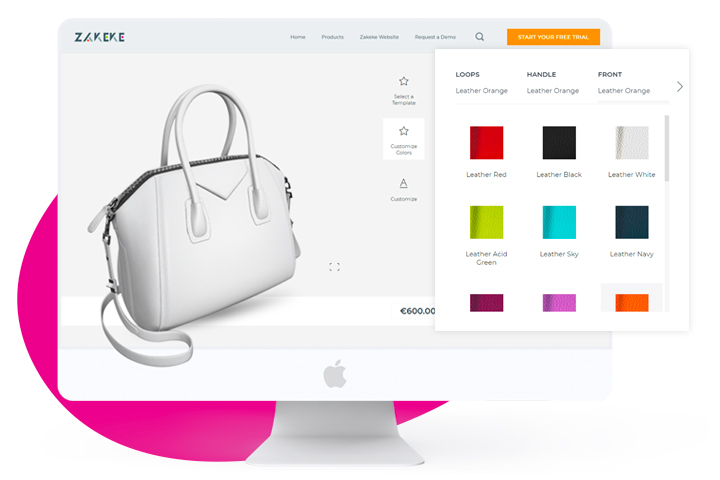
Influence Your Target Audience to Engage With Your Brand
Add visual content to your website to entice your target audience to engage with your brand. Doing so will help you increase brand awareness, reach, and even sales.
When creating visual content, make sure to keep your target audience in mind. This means creating content that’s relevant, helpful, and visually appealing. Additionally, you need to make sure that your visual content is updated regularly and easy to share to make your audience more willing to engage.
Turn to Zakeke if you need help creating engaging visual content for your audience. You can count on our Visual Commerce Platform to provide solutions that will allow you to give your audience an immersive experience whenever they visit your website.
Through our Visual Product Customizer, 3D Configurator, 3D & AR viewer, and other technologies, you can easily create visual content that will put you ahead of your competition. Ready to take your experience to the next level?
Author – Marc Bartolome
Marc Bartolome is the Head of Business Development at SEO Services Australia, a strategist, and enabler of hundreds of successful digital marketing campaigns. Always looking out for the little guys, he specializes in helping SMEs create a bigger impact online – which is why he writes blog posts like this.




